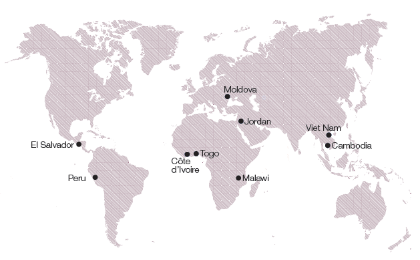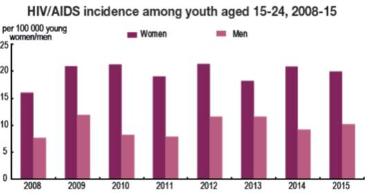Inclusive societies and development
Youth well-being policy review of Moldova: A 60 seconds guide
 |
What is the Youth Well-being Policy Review of Moldova?
|
The Youth Well-being Policy Review of Moldova assesses the situation of youth in Moldova with regards to employment, education, health and civic participation. This multi-dimensional approach allows us to capture the diverse facets of youth livelihoods. The review includes:
The review is part of the Youth Inclusion project, co-funded by the European Union and implemented by the OECD Development Centre. |
|
How's life for young Moldovans?
|
With youth (aged 14-35) accounting for one-third of its population, Moldova has a unique socio-economic development opportunity. However, Moldovan youth continue to face multiple and interconnected challenges. According to the Youth Multi-dimensional Deprivation Indicator (Y-MDI), developed by the EU-OECD Youth Inclusion project, one in three young Moldovans faces difficulties in multiple dimensions of well-being, in particular in employment, civic participation and, to a lesser degree, health. Despite the positive trends in educational attainment, education quality remains a challenge. In 2014, 38.2% of young people obtained a tertiary diploma. In fact, the share of young people with tertiary education almost doubled between 2004 and 2014 (from 20.5% to 38.2%). However, almost a third of students do not have the basic skills to enter the labour force. Young Moldovans find it hard to access decent work. Most employed youth are paid below the average (86.3%) or are in informal employment (30.7%). Moreover, more than a quarter (27.9%) is overqualifi ed for their job. Given these challenges, 57.3% of youth consider changing jobs. Although youth are concerned about societal problems, their civic engagement and political participation have been limited. Only 18.1% are involved in volunteering activities and hardly 25% express their interest in politics. In 2014, only 37.1% of youth voted in the parliamentary elections. Low youth turnout at elections stems from their alarmingly low trust in public institutions, including the Parliament (3.0%), the President (4.1%), the Government (5.2%) and political parties (6.8%).
|
|
Did you know...?
Moldovan youth face important gender disparities in health. Yet, very few health and youth policies include the gender dimension in their provisions. The review shows that from 2008 to 2015 the HIV/AIDS incidence for young women was almost twice as for young men. |
|
|
How to address those challenges?
|
Youth is a priority for the Moldovan government. Its National Youth Development Strategy 2020 and Action Plan, adopted in 2014, set a clear vision for their inclusion and empowerment. The new Ministry of Education, Culture and Research (MoECR) is in charge of the implementation and evaluation of national youth policies. Moreover, the Governmental Commission for Youth Policies, created in 2011 and headed by the Prime Minister, aims to co-ordinate the development, implementation and monitoring of youth policy at central level and ensure inter-sectoral co-operation. Despite these formal efforts, the Commission is not operative and the implementation of the Strategy is weak at regional and local levels. Over the years, the ministry mandated for youth policy had been facing important obstacles, notably in terms of institutional stability and vision, as well as human and financial resources. Experts in the youth fi eld, particularly local level civil servants, do not always fully comprehend youth needs and related policies; and youth workers, who play a crucial role at local level, are not adequately trained or paid, which affects the quality of services. |
What can the government do?
|
Strengthen the institutional framework and governance of youth policies
Professionalise local youth service provision
|
Related Documents

